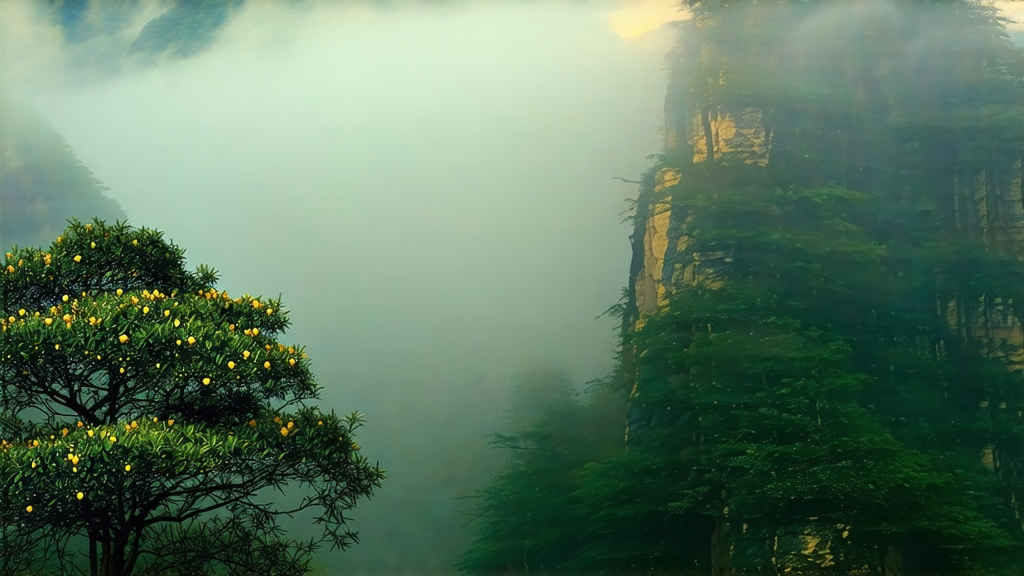
Tucked high on the mist-laced shoulders of Mengding Mountain in Sichuan Province, Mengding Huangya—literally “Yellow Bud from Mengding”—is the quiet aristocrat of Chinese tea. While green teas grab export headlines and pu-erhs age into investment portfolios, this yellow tea has spent thirteen centuries perfecting the art of discretion. It was the first tea ever recorded as an imperial tribute in A.D. 724, yet today even devoted tea hunters need a map, a translator and a tolerant driver to taste it at source. The journey is worth every hair-pin bend.
History: from altar to emperor
Buddhist monk Wu Lizhen is credited with planting the earliest seven bushes on Mengding’s summit in 53 BCE, ostensibly to sanctify the mountain altar. By the Tang dynasty the tender buds were escorted by mounted courier down the post-roads to Chang’an, travelling faster than fresh lychees to reach the palace while still fragrant. Song dynasty bureaucrats graded it “First under Heaven,” a title later echoed by Ming and Qing gazetteers. When the last emperor abdicated in 1912, the tribute system collapsed; mountain monks quietly kept the craft alive in temple kitchens, turning leaf for pilgrims rather than palaces. Only since the 1980s has commercial production resumed, and always in micro-batches—fewer than 3000 kg reach market most years.
Micro-terroir: where cloud kisses bedrock
Mengding Mountain rises 1 450 m above the Sichuan basin, trapping a perpetual cloud cloak that filters sunlight into a soft, shifting chiaroscuro. The soil is Devonian sandstone rich in quartz and feldspar, acidic (pH 4.9–5.4) and laced with selenium leached from granite intrusions. Night temperatures can drop 12 °C within hours, forcing the tea plant to convert starch into soluble sugars and amino acids—especially theanine, which later translates into the tea’s hallmark brothy sweetness. Indigenous cultivar “Mengding Qunti” (a seed-propagated population rather than cloned bushes) has small, thick leaves and an unusually low catechin-to-polyphenol ratio, ideal for the gentle oxidation that defines yellow tea.
Plucking: one bud, one standard, one hour
The picking window opens ten days before Qingming when the bud reaches 15–20 mm but has not yet unfurled into a leaf. Workers climb the slope before 7 a.m. while dew still acts as a natural antioxidant film. Each pluck must satisfy “three consistencies”: length (±2 mm), colour (jasper green with ivory tip), and pubescence (silky down visible against a fingernail). Experienced pickers gather barely 400 g per hour; 35 000 buds—an entire day’s labour for six people—yield just 500 g of finished tea.
Craft: the confidential 48-hour yellowing
Yellow tea’s identity rests on “sealed yellowing” (men huang), a step that teeters between green tea arrest and black tea fermentation. Mengding Huangya undergoes three iterations:
-
Sha-qing (kill-green) over bamboo pole fire
Leaves are tossed in a wok heated to 180 °C within ten minutes of plucking. The goal is partial enzyme deactivation—60 % rather than the 90 % typical of green tea—leaving enough polyphenol oxidase for later transformation. A master listens for the shift from grassy crackle to chestnut pop, then presses the leaf against the wok with a palm-sized hemp cloth to achieve a ribbon shape without breaking cell walls. -
First wrapping: the “hot pillow”
The still-warm leaf is piled 8 cm thick on cotton cloth, rolled into a loose sausage, and tucked into a bamboo steamer whose residual moisture hovers at 55 °C. For 60–90 minutes the bundle rests, allowing endogenous respiration to raise internal temperature to 45 °C. Chlorophyll begins to degrade into pheophytin, edging the leaf colour toward maize yellow. -
Second firing & re-wrapping
After a quick 80 °C re-firing to 40 % moisture, the leaf is wrapped again, this time in double-layered rice paper inside a carved wooden box. Over 6–8 hours the pile “sweats,” developing methyl salicylate and geraniol, compounds responsible for the tea’s alpine-flower nose. The master gauges progress by aroma alone: when the green note